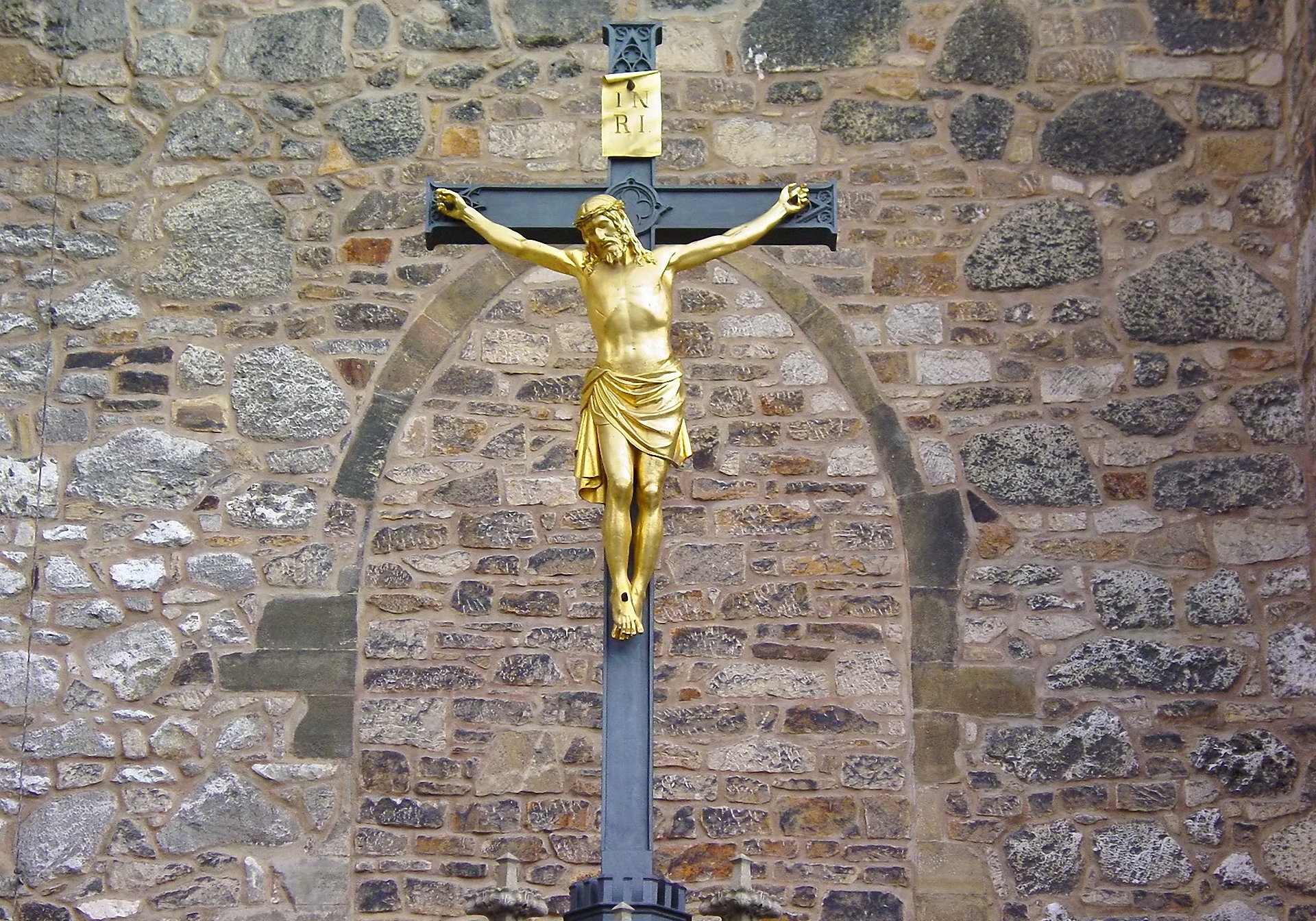Jeshu Khrista Crucifixion and entombment

Main articles: Crucifixion of Jesus and Burial of Jesus
See also: Sayings of Jesus on the cross and Crucifixion
eclipse
Jesus' crucifixion is described in all four canonical gospels.
After the trials, Jesus is led to Calvary carrying his cross ;
the route traditionally thought to have been taken is known
as the Via Dolorosa . The three Synoptic Gospels indicate
that Simon of Cyrene assists him, having been compelled by
the Romans to do so. [218][219] In Luke 23:27–28 Jesus
tells the women in the multitude of people following him
not to weep for him but for themselves and their
children. [218] At Calvary, Jesus is offered a concoction
usually offered as a painkiller. According to Matthew and
Mark, he refuses it. [218][219]
The soldiers then crucify Jesus and cast lots for his
clothes. Above Jesus' head on the cross is Pilate's
inscription, "Jesus of Nazareth, the King of the Jews."
Soldiers and passersby mock him about it. Two convicted
thieves are crucified along with Jesus. In Matthew and
Mark, both thieves mock Jesus. In Luke, one of them
rebukes Jesus, while the other defends him. [218][220][221]
Jesus tells the latter: "today you will be with me in
Paradise" (Luke 23:43). In John, Mary, the mother of Jesus,
and the beloved disciple were at the crucifixion. Jesus tells
the beloved disciple to take of his mother (John 19:26–27).
The Roman soldiers break the two thieves' legs (a
procedure designed to hasten death in a crucifixion), but
they do not break those of Jesus, as he is already dead
(John 19:33). In John 19:34 , one soldier pierces Jesus' side
with a lance, and blood and water flow out. [222] In the
Synoptics, when Jesus dies, the heavy curtain at the
Temple is torn. In Matthew 27:51–54 , an earthquake breaks
open tombs . In Matthew and Mark, terrified by the events, a
Roman centurion states that Jesus was the Son of
God. [218][223]
On the same day, Joseph of Arimathea, with Pilate's
permission and with Nicodemus ' help, removes Jesus' body
from the cross , wraps him in a clean cloth, and buries him
in his new rock-hewn tomb .[218] In Matthew 27:62–66 , on
the following day the chief Jewish priests ask Pilate for the
tomb to be secured, and with Pilate's permission the priests
place seals on the large stone covering the entrance.[218]
[224]